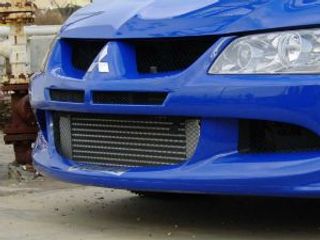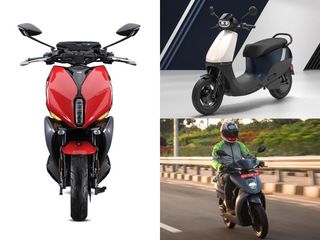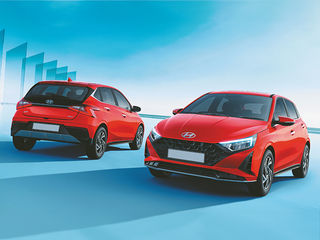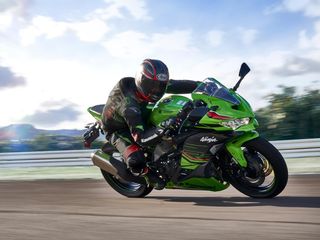Many years ago, when Yamahas and Pulsars ruled the Indian market, there was talk in the town that Mahindra was also going to come up with a sporty bike. The Mojo concept was first unveiled in 2010. Post that, there were numerous spy shots, umpteen anticipation of the bike being unveiled in one auto show or the other. The hype created around it was like the legend of the bigfoot. Jaws dropped at the rare sighting but no one knew when the bike would be launched or how exactly it was going to be. Mahindra had more of a hands-on approach in the bike’s developments. Instead of primarily depending on boardroom designers, they designed the bike based on the feedback received by a number of riders across India. I always dreamed of owning an absolute no-nonsense touring motorcycle and I eventually got to realise that dream last year. A few months later, the Mahindra Mojo was launched and I was really curious about its capability. Fast forward to the present, I finally got the chance to ride this bike and here’s what I have to say about it:
[ATTACH=CONFIG]n19443[/ATTACH]
[B]Engine and Transmission:[/B]
The reason I’m talking about the power unit first is because Mahindra has really worked hard on the engine and has come up with just about what we need for our Indian roads. The Mojo is powered by a single cylinder 295cc, liquid cooled, fuel-injected engine putting out a modest 26bhp of power at 8,000rpm and a healthy 30Nm of torque at 5,500rpm. Compared to its nearest 300cc competitor, the KTM 390 Duke, the power and torque figures may not look that alluring on paper but you have to ride this bike to feel how it really puts down that power on the road. The engine is really in its element after 4,000rpm and that’s where the powerband is felt. The acceleration is pretty good and the gears are adequately spaced out. The first two gears are short and are best for spirited sprints. The fifth and sixth gears are long and can comfortably let you cruise at high speeds. The best part about this bike’s 6-speed transmission is that when I was cruising at around 90kph in fifth was when I realised I had one more gear left. The engine doesn’t feel stressed easily, thanks to the dual overhead camshafts which really does help the engine pick up revs faster and sustain it. The bike has a ‘limp home’ mode which apparently keeps the revs below 5,000rpm to prevent the engine from getting overworked. So, going by the speed matching the revs, you can technically do up to 88kph in sixth gear, in limp mode! Now, I didn’t have the chance to really test this feature, but if this is true, then it’s a really good addition.
[ATTACH=CONFIG]n19421[/ATTACH]
Out on the highway, one can comfortably cruise without any stress to the engine at around 120-130kph with the throttle half open. The powerplant doesn’t produce too much vibrations either. Sure, little vibrations do creep through the handlebar post 100kmph, but it isn’t that intrusive. I did a 700+ km ride in a day, covering Delhi, Agra and Jaipur and I can confidently say that this bike has a gem of an engine. The long wheelbase of 1465mm really helps the bike maintain its line at high speeds and the road-focussed suspension complements the bike’s high-speed dynamics. But more on that later. The only thing you need to worry is the wind blast. I discovered the hard way that my helmet isn’t aerodynamic at speeds post 100 kph. But I think you can manage the wind-blast if you’re fully geared with a well designed helmet. An optional adjustable windscreen would’ve been a welcome addition on the Mojo.
[B]Suspension:[/B]
The Mojo is equipped with inverted forks at the front and a gas charged monoshock at the rear. The rear monoshock is slightly offset and has 143mm of travel. The front gets little more travel, at 143.5mm. The suspension was excellent at handling high speeds on smooth roads but I feel it isn’t optimally designed for Indian roads (read lunar surface). It throws a nasty fit when you go over potholes. Once, I accidentally went over a pothole at around 80kph and I almost got catapulted off the bike, while the Thunderbird ahead of me simply glided over it. I don’t know if it’s the case with just this bike or not, but Mahindra really needs to look into this matter. The damping isn’t good enough to cushion the bumps at low speeds either. When I went over a set of rumble strips, I was forced to really slow down to a snail’s pace to go over it without getting my insides displaced. I almost had to let the bike crawl at 2-3kmph to go over the strips.
[ATTACH=CONFIG]n19422[/ATTACH]
[ATTACH=CONFIG]n19423[/ATTACH]
[B]Brakes:[/B]
The braking duties are taken care by disc brakes at both front and rear. They are sourced from a Spanish company called J. Juan. The 320mm front petal disc with twin piston caliper is one of the largest in the segment, but it’s all show. You pull the lever and nothing happens even at half the travel. As you pull further, the bike stops with a jerk all of a sudden. The brakes snatch quite a bit and doesn’t have progression you expect it to have. The feel is just not there, not even as much as my Thunderbird gives. It just does not inspire the confidence, especially at high speeds. Even at city speeds, the brakes are twitchy. Frankly, it’s quite scary to use the brakes on this bike. It’s not like other bikes I have ridden and takes some time to get used to.
[ATTACH=CONFIG]n19424[/ATTACH]
The rear wheel is anchored by a 240mm disc. One interesting fact is that the rear disc also gets a twin piston caliper, something that’s normally found in sport and super bikes. The rear brake is much better than the front in terms of feel but locks up a little under panic braking.
[ATTACH=CONFIG]n19425[/ATTACH]
Word is that Mahindra is working on the ABS version and I really hope they sort out the braking issues on the ABS equipped one.
[B]Tyres:[/B]
One of the best things about the Mojo is the tyres. Mahindra has not cut corners here and has gone the whole hog by providing the bike with Pirellis - Diablo Rosso II to be precise. They do a wonderful job at gripping the terra firma like a gecko. The phenomenal grip more than makes up for the Mojo’s lazy dynamics. The 110 section front, paired with a generous 150 section rear encourages you to push the bike a little out of your comfort zone while at the same time assuring you that it won’t let you down. Mind you, it’s purely because of the tyres! If only the rake and lean angles were better. But hey, you can’t expect a tourer to do everything now, can you?
[ATTACH=CONFIG]n19426[/ATTACH]
The tyres have a large contact patch and provide oodles of grip:
[ATTACH=CONFIG]n19427[/ATTACH]
[ATTACH=CONFIG]n19428[/ATTACH]
[B]Handling and Comfort:[/B]
True to its touring credentials, the Mojo likes long highways and wide turns. Show it a set of twisty turns, the top-heavy dynamics reveals its reluctance. The humongous 21 litre tank and the unnecessarily big headlight cluster are the culprits here. Even while stationary, I could actually feel the bike swaying side to side because of the fuel inside. If I’m being optimistic, the long rake angle and heavy weight ensures you don’t have to worry about crosswinds at all. I must say, the straight-line stability is indeed impeccable.
[ATTACH=CONFIG]n19429[/ATTACH]
The seating position is spot-on and I absolutely loved it! The long sculpted seat is perfectly shaped for your bottom. You could keep riding this bike for as long as you want without experiencing even a hint of fatigue. The wide handlebar is easy to reach and the seating position is slightly forward biased but is more or less upright. The footpegs aren’t too aggressively placed either. However, I’d have liked the size of the rear brake pedal to be slightly longer instead of the stubby one that Mahindra has chosen. It’s just a personal preference though. The gear shift lever is toe-only and is ergonomic enough while using it with riding boots.
[ATTACH=CONFIG]n19430[/ATTACH]
Manoeuvring the bike at slow speeds is a nightmare because of its unusually large turning radius. In fact, it was more difficult to turn this bike than my Thunderbird which itself is a relaxed cruiser. You’ll have to awkwardly move to and fro if you want to take a U-turn in a narrow road.
The pillion seat is small, flat and lacks proper cushioning. When the rider accelerates, the pillion is pushed back and it’s easy to lose his/ her grip on the footpegs. It’s quite scary, really!
What is this little seat? To keep your lunchbox? [ATTACH=CONFIG]n19431[/ATTACH]
The engine heat is kept well in check, thanks to the large radiator with a fan to aid cooling even further. I didn’t feel the heat intruding into my legs even in peak traffic conditions. Sure, my shoes got a little hot in traffic, but other than that there’s nothing to worry. Many liquid cooled bikes are plagued by heating issues and I’ve got to give brownie points to Mahindra for making a powerplant with good heat management.
[ATTACH=CONFIG]n19432[/ATTACH]
One more thing to note is the oddly placed side stand. When retracted, it goes around the canister exhaust and ends up scraping the tarmac if you’re being too enthusiastic in corners.
Speaking of the exhaust, the Mojo has got a twin canister system. While most dismiss the inclusion of the second exhaust as an unnecessary addition, I’d say it sounds damn cool! The exhaust system emits a deep, rapacious rumble peppered with pops and burbles. That’s one of the things that makes the bike so likeable! Even when you let off the throttle, the exhaust note is so bass heavy it gathers a lot of attention.
[ATTACH=CONFIG]n19433[/ATTACH]
[B]Design and Features:[/B]
The Mojo has a love-it-or-hate-it kind of design and is unapologetic for its uniqueness. The front is dominated by a large twin headlamp housing with LED eyebrows atop. The fly-screen is also large and ends with the instrument cluster. The analogue-digital instrument cluster is reminiscent of the one in Benelli TNT 899. The analogue tachometer is placed neatly next to the digital display which shows the speed, odometer readings, trip meters A and B, top speed recorder (why?), fuel gauge and a clock. There’s also a shift light which lets you know when you redline the bike. Again, why? I feel, Mahindra should’ve included a distance-to-empty gauge instead of these two gimmicks. The tell-tale lights include high-beam light, left and right indicator light, side stand indicator, engine check light and a coolant light. The button quality is good and is fairly easy to use with gloves.
When the engine kill switch is turned off, the display and the headlamps turn off. Only the clock stays on display for a while even after switching off. [ATTACH=CONFIG]n19434[/ATTACH]
The headlights are 35W each. Both the low beam and the high beam have good spread, but really lack intensity. It’s very difficult to keep the pace on unlit highways. In my 700km ride, I had to keep my focus on the light path of the rider in front of me to look out for potholes. It was extremely taxing. Hopefully, the lighting issues are sorted in the Tourer Edition of the Mojo, courtesy the LED fog lights.
[ATTACH=CONFIG]n19435[/ATTACH]
The switchgear is illuminated and is similar to the one used in the Duke twins. The indicator stalk, horn button and the pass beam trigger are on the left and the engine kill switch, ignition button and the lights switch are on the right. The build quality is solid. However, I found the indicator stalk to be too stubby and I had to adjust my palm and then use my thumb to reach the stalk every time I wanted to use it. This becomes annoying when you’re using indicators frequently to overtake vehicles. A smaller stalk could’ve improved the switchgear ergonomics.
[ATTACH=CONFIG]n19436[/ATTACH]
Slide the switch to 'Parking Lights On' and only then the display in the instrument cluster is backlit. In isn't, in off position. [ATTACH=CONFIG]n19437[/ATTACH]
The rear-view mirrors are decent in terms of visibility but were not sturdy at all. The mirrors started drooping and losing their angle of focus at the first sign of a road undulation. Apparently the screws on the ball-joint were loose. I got them tightened as much as possible at the service centre. After that, the rigidity improved but was still feeble. As I was riding, I often had to adjust the mirrors every 500 metres which became a little frustrating over time. It may be the case with just this bike alone as not all rear view mirrors are that bad. The dual horn sounds as if it’s weak and malnourished. I enquired about it with the dealer and they said the sound was normal. Over time, I noticed a fluctuation in the tone of the horn too. I suspect it is some loose connection. The best solution is to hold the clutch and rev it. Everyone gives way for the Mojo!
[ATTACH=CONFIG]n19438[/ATTACH]
The fuel tank is muscular with long, sweeping creases on either sides. The Mojo logo is inscribed on top of the crease and isn’t visible when looked at from the side. At 21 litres, the humongous fuel tank is ideal for long distance touring. The bottom portion of the tank has the Mahindra logo embedded on a silver plating. For taller riders, this 3-D logo also acts as a tank grip. Clever, right? The exposed, golden twin tube frame gives the Mojo a unique character. The seat is a single piece unit and it tapers off at the rear. The tapering is also one of the reasons why the pillion seat isn’t comfortable. The tail light is tiny and sits at the pointed end of the rear. Mahindra could’ve designed the tail light better as this one looks like an afterthought. The clear lens indicators are mounted on the license plate holding kit. The swingarm is also painted gold, to complete that mojoestic look (see what I did there?). FYI, the bike does not come with a centre stand.
[ATTACH=CONFIG]n19439[/ATTACH]
[ATTACH=CONFIG]n19440[/ATTACH]
The tank lid is slightly angled towards the right. The arrow-shape hinged lid doesn't point forward [ATTACH=CONFIG]n19441[/ATTACH]
Overall, the quirky design sets this bike apart from the rest. Although, I’d have liked the front headlamp cluster to be a little less oversized. The unique design and the lack of awareness of the bike means you get stared at by fellow motorists quite often followed by the usual questions like ‘What’s the price?’, ‘Kitna deti hai?’, ‘What’s the engine capacity?’ and ‘What bike is it?’, in that particular order. The not-so-subtle white and gold colour combination is also one of the reasons for the questions it attracted.
[ATTACH=CONFIG]n19442[/ATTACH]
[B]Verdict:[/B]
Mahindra has made a very good attempt at cracking the premium segment with the Mojo. It does come with its own chinks in its armour but they are all fixable. If Mahindra can iron out those few niggling issues, then I think the Mojo has the potential of making a sizeable dent in the touring market ruled by Royal Enfield's, Bajaj Avengers and maybe even the KTM Duke twins. Speaking of moolah, the Mojo is priced at INR 1,69,870, ex-showroom, Delhi. At this price, I think the Mojo is a great value for money proposition that is capable of some no nonsense touring. Sure, there are some flaws but which motorcycle doesn’t?
[ATTACH=CONFIG]n19444[/ATTACH]
P.S. More detailed pictures are posted in the thread below:

 View More Comments
View More Comments
 Add your Comment
Submit Comment
Add your Comment
Submit Comment Asked by Nagaraj Maddodi
8 Answers
Asked by Nagaraj Maddodi
8 Answers
 Asked by Knight Rider
8 Answers
Asked by Knight Rider
8 Answers
 Asked by Radha Krishna
56 Answers
Asked by Radha Krishna
56 Answers
 Asked by Tarun Sundar
118 Answers
Asked by Tarun Sundar
118 Answers
 Asked by Balamuralikrishnan
4 Answers
Asked by Balamuralikrishnan
4 Answers
 Asked by Arc Academics
4 Answers
Asked by Arc Academics
4 Answers
 Asked by Mohit Datasec
15 Answers
Asked by Mohit Datasec
15 Answers
 Asked by Shyamal Deka
4 Answers
Asked by Shyamal Deka
4 Answers
 Asked by Amit Rai
3 Answers
Asked by Amit Rai
3 Answers
 Asked by Jiten Sarma
4 Answers
Asked by Jiten Sarma
4 Answers
 Tips and Tricks to Maintain Car Cooling Systems5 Sep, 2014 | By Team ZigWheels
Tips and Tricks to Maintain Car Cooling Systems5 Sep, 2014 | By Team ZigWheels Windscreen and Window care27 Jun, 2014 | By Team ZigWheels
Windscreen and Window care27 Jun, 2014 | By Team ZigWheels Carpets and Mats26 Jun, 2014 | By Team ZigWheels
Carpets and Mats26 Jun, 2014 | By Team ZigWheels Car Polishing Tips27 Jun, 2014 | By Team ZigWheels
Car Polishing Tips27 Jun, 2014 | By Team ZigWheels Choosing a Car Cover27 Jun, 2014 | By Team ZigWheels
Choosing a Car Cover27 Jun, 2014 | By Team ZigWheels Reserve The 2023 Tata Nexon EV Facelift From Today!9 Sep, 2023 | By Team ZigWheels
Reserve The 2023 Tata Nexon EV Facelift From Today!9 Sep, 2023 | By Team ZigWheels World EV Day 2023: All The Electric Two-wheeler Launching This Year Itself9 Sep, 2023 | By Team ZigWheels
World EV Day 2023: All The Electric Two-wheeler Launching This Year Itself9 Sep, 2023 | By Team ZigWheels These Are Top Automotive Headlines Of The Week9 Sep, 2023 | By Team ZigWheels
These Are Top Automotive Headlines Of The Week9 Sep, 2023 | By Team ZigWheels Here’s What The New Base Era Variant Of The 2023 Hyundai i20 Facelift Packs10 Sep, 2023 | By Team ZigWheels
Here’s What The New Base Era Variant Of The 2023 Hyundai i20 Facelift Packs10 Sep, 2023 | By Team ZigWheels Get Ready For The Four-cylinder 400cc Screamer From Kawasaki10 Sep, 2023 | By Team ZigWheels
Get Ready For The Four-cylinder 400cc Screamer From Kawasaki10 Sep, 2023 | By Team ZigWheels


